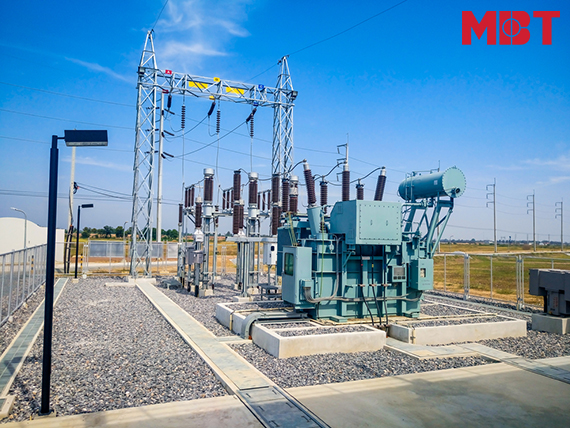What is transformer substation - Types of transformer substation
A transformer substation is a part of the electrical installation that includes the terminations of the transmission or distribution lines and switchgears.
Table of content:
1. What is transformer substation
2. Construction of transformer substation
3. Designing request of transformer substation
4. Types of transformer substation
4.1 Classification of transformer stations according to voltage
4.2 Classification of transformer stations according to position on the grid
4.3 Classification of transformer stations according to the purpose of using
5. Reputable transformer substation manufacturer
1. What is the transformer substation?
A transformer substation is a part of the electrical installation that includes the terminations of the transmission or distribution lines and switchgear. It contains one or more transformers as the central part. The substation also typically includes all the necessary devices for control and protection of electricity and itself.

A super high voltage transformer substation
Transformer substations transform voltage from high to low, or the reverse, or perform any of several other important functions. Before being used, electric power may flow through several transformer substations at different voltage levels. A transformer substation includes transformers to change voltage levels between high transmission voltages and lower distribution voltages, or at the interconnection of two different transmission voltages.
2. Construction of transformer substation
There are many types of substations, each type of substation has various structural features, but all substations include the following parts:
-
Transformers
-
Busbar system, isolation knife
-
Lightning protection system
-
Self-use electric system
-
Operating area
-
Distribution area
3. Designing request of transformer substation
A transformer station should, when designed, satisfy the following requirements:
-
Ensuring power quality: Determine the station's load center and location so that the transformer substation is located in the center of the load to save lines, limit voltage drop, and loss of power network.
-
Investment costs are not wasted
-
Safety for people and equipment: Ensure industry aesthetics near the power grid and ensure the line's electricity safety corridor. Besides, to ensure local people's safety where the transformer substation is located, the transformer substation location will not affect the factory and other works.
-
When designed, the transformer station must have a structure convenient for operation and repair.
4. Types of transformer substation
4.1 Classification of transformer stations according to voltage
There are four types of transformer substations that are classified by voltage:
- Super high voltage: Transformer station with voltage greater than 500kV
- High voltage: Transformer stations with voltage of 66kV, 110kV, 220kV and 500kV
- Medium voltage: Including transformer stations with voltage of 6kV, 10kV, 15kV, 22kV and 35kV
- Low voltage: Transformer stations with smaller voltage are usually 0.4kV and 0.2kV
4.2 Classification of transformer stations according to position on the grid
a. Intermediate transformer station
It is a transformer station that receives electricity at a voltage of 110V - 220V and then transforms it into a voltage of 22kV - 35kV. These substations are usually located outdoors due to their huge capacity. Transformers and protective switches are also not small in size.
b. Distribution substation
The distribution transformer station receives electricity from the intermediate transformer station and converts electricity from 22kV - 35kV to 0.4kV - 0.22kV. This is a common transformer station used in the low-voltage network of civil buildings or factories, but the most common is the 22 / 0.4kV station in Vietnam, and it varies in other countries.
Types of distribution substation: suspension station, gantry station, ground station, closed station (indoor voltage station), and Kios station. These types have the same tasks, but depending on the environment, topographical characteristics, aesthetics and investment costs, choose the right station.
-
Pole mounted substation: A station where high and low voltage transformers are hung on the column. Transformers are usually single-phase or a group of three single-phase transformers. Low-voltage cabinets are placed on columns.
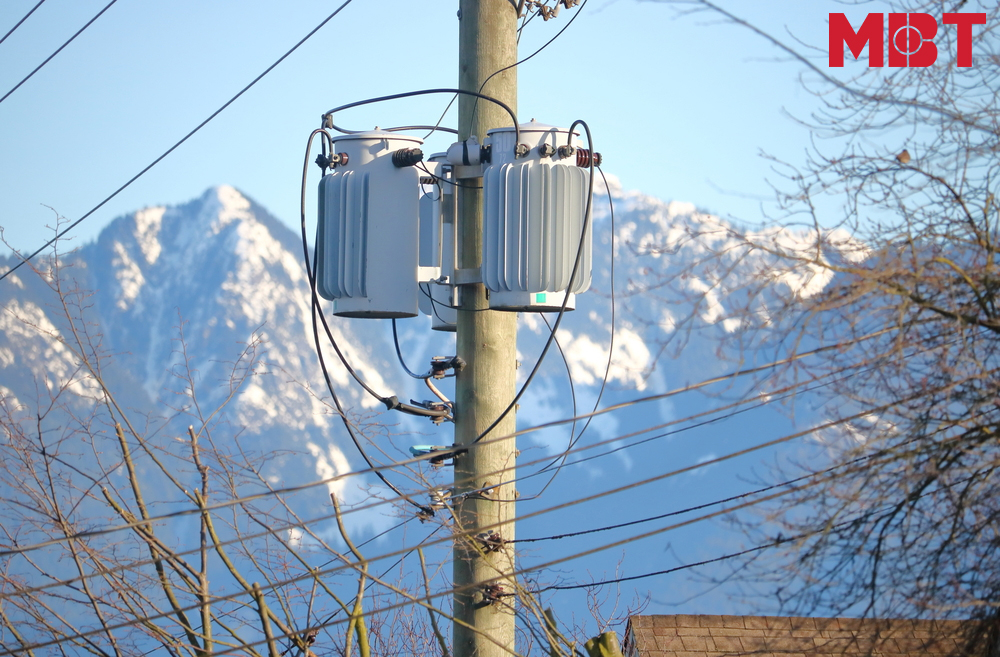
Pole mounted substation
-
Gantry transformer substation: A typical structure of the gantry transformer substation is a transformer placed on the support between two large pillars, with a voltage of 35kV, 22kV / 0.4kV.
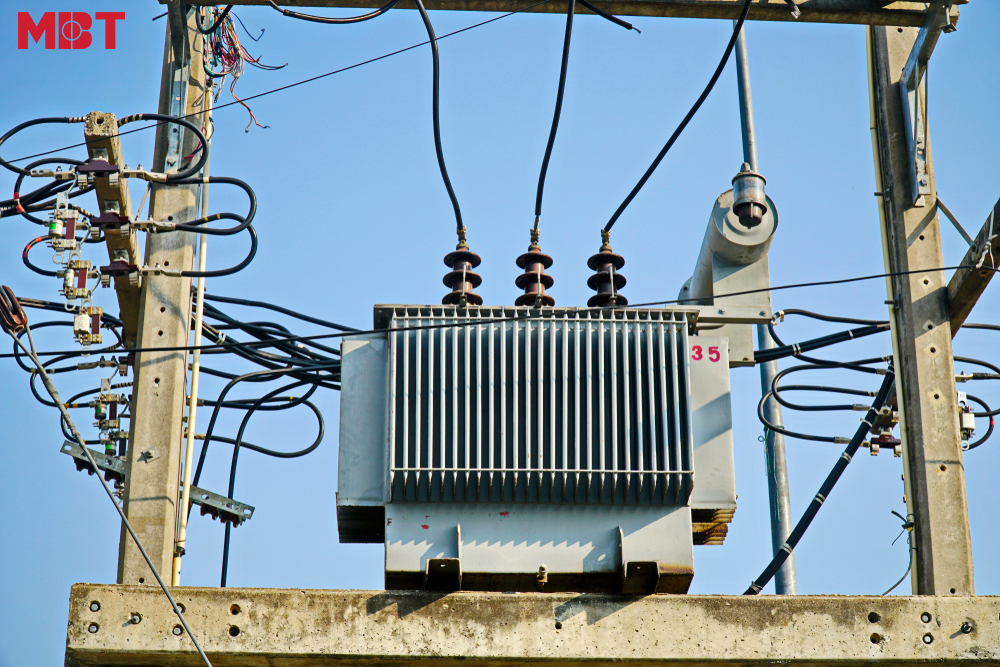
Gantry transformer substation
-
Grounding substation systems: Commonly found in places with terrain, land in rural areas, small and medium-sized agencies and enterprises. The ground station features are high-pressure equipment placed on columns, low-pressure indoor distribution cabinets, and transformers often placed on the ground cement platforms. Around the station is protected by a fence to ensure safety for people.
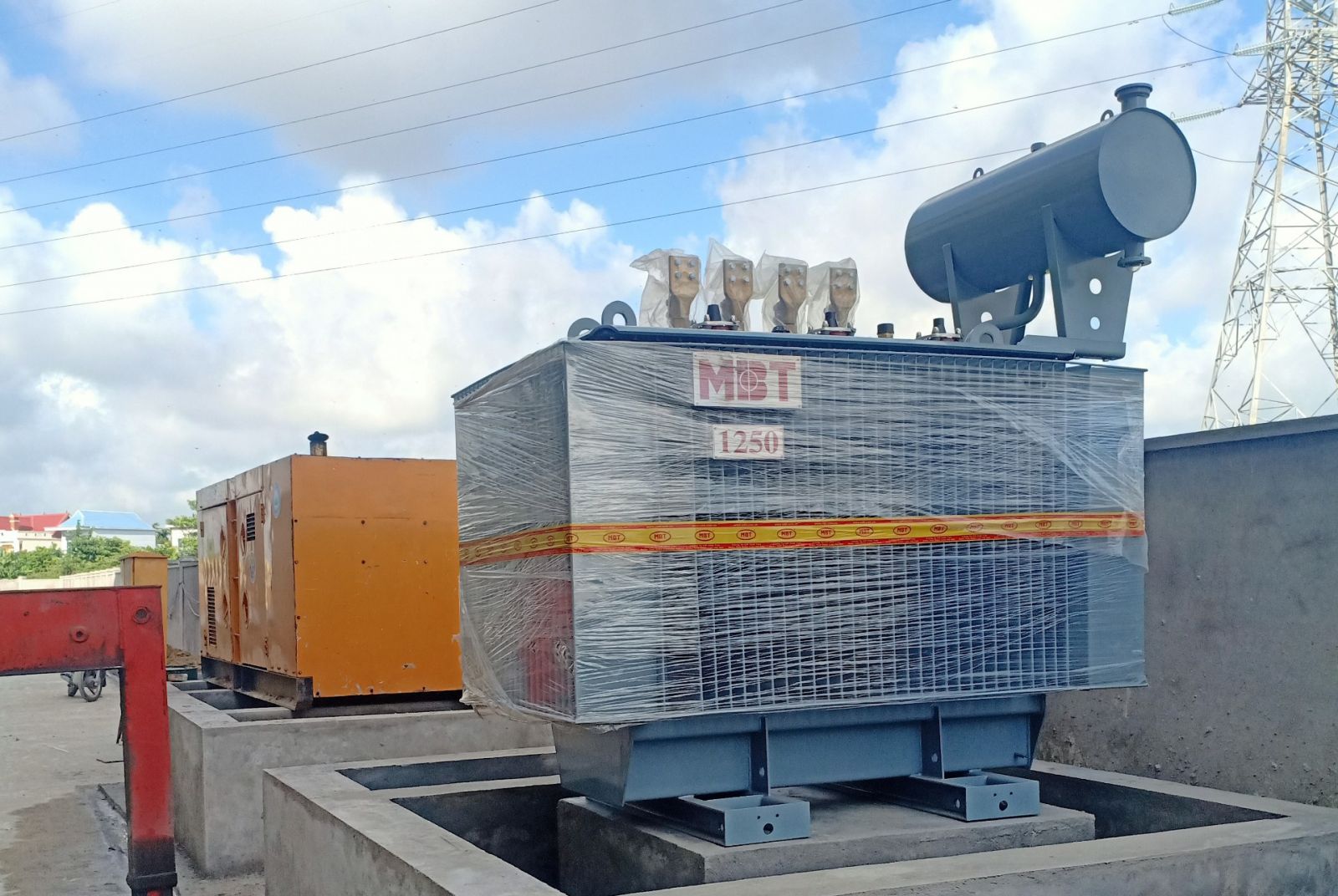
Image of MBT substation with capacity of 1250kVA in Hai Phong
-
Indoor substation: A type of substation that transformers and electrical equipment are installed indoors. In each station, there will be 3 rooms, including high voltage room, medium voltage room, and low voltage room. This station is commonly used in places with high population density, such as urban areas and new residential areas, to ensure users' aesthetics and safety.
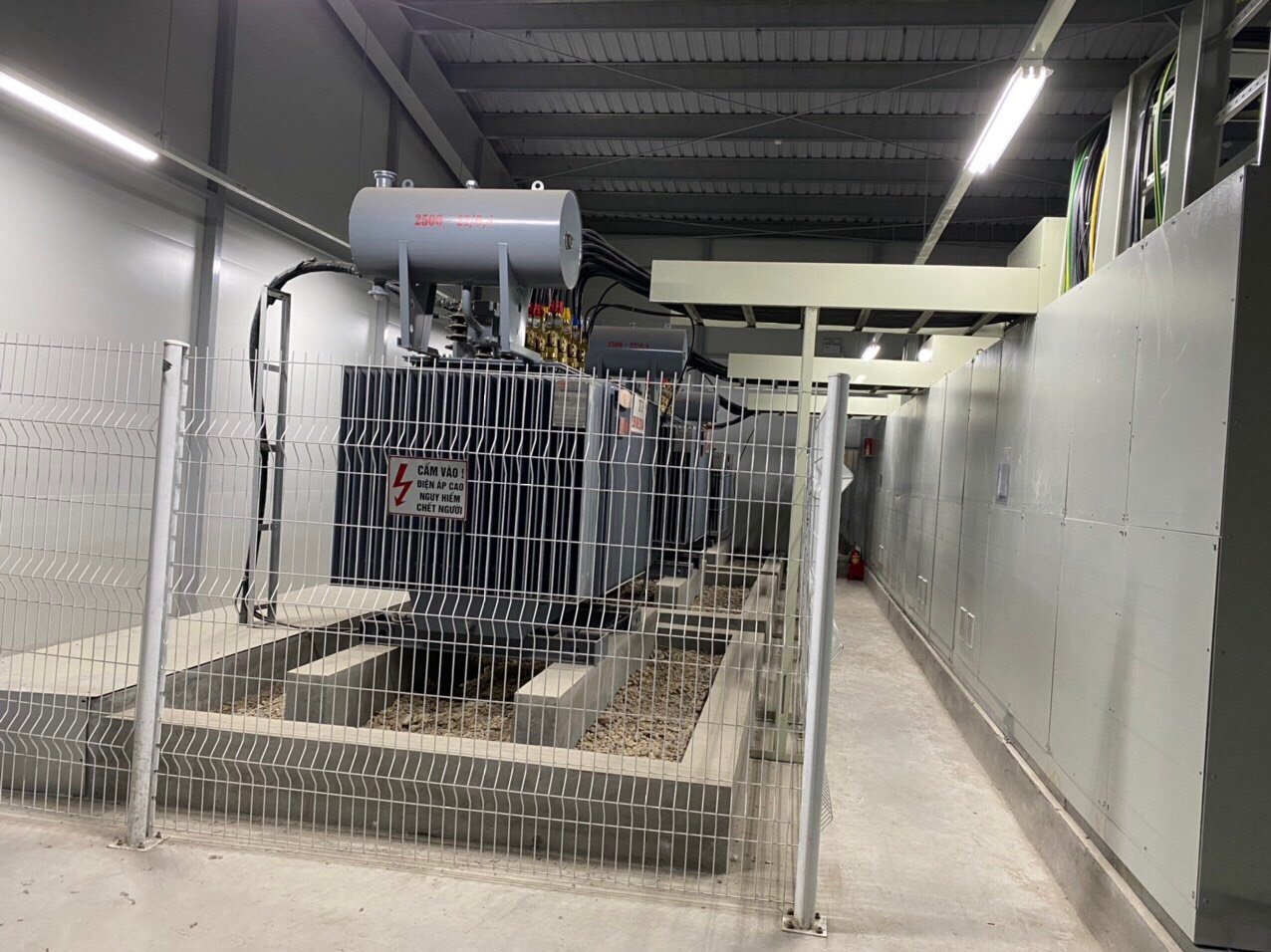
MBT indoor transformer substation
-
Kiosk substation: a voltage station that is manufactured and installed in a fully enclosed metal frame. This type of station has 3 compartments: Medium-voltage compartment, low-voltage compartment and transformer compartment. This voltage station is widely used in medium voltage electrical systems in the industry, residential areas, and high-rise buildings.
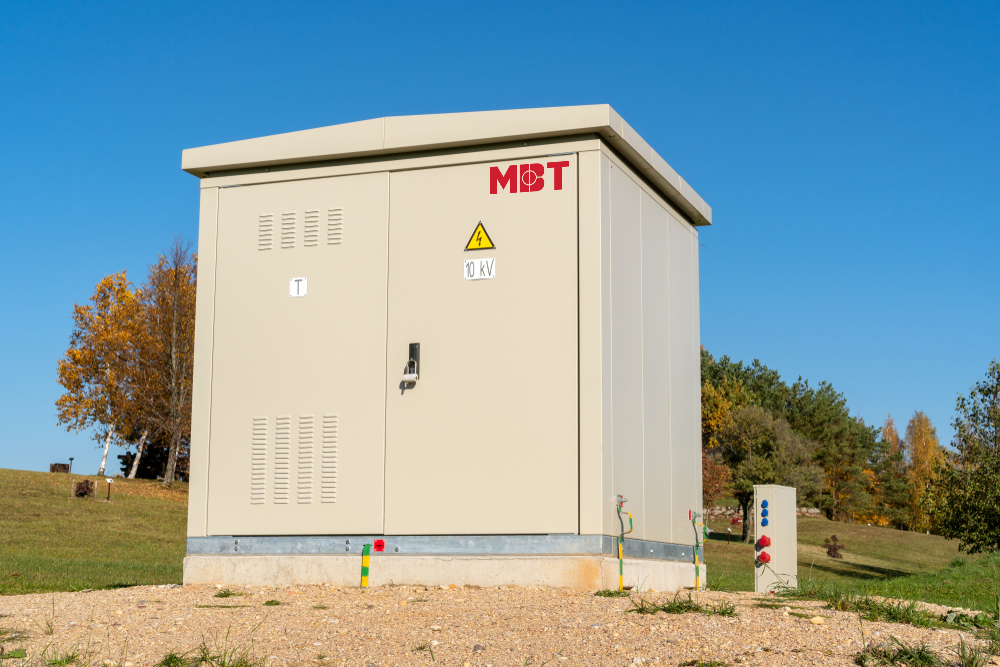
MBT's Kiosk substation
4.3 Classification of transformer stations according to the purpose of using
a. Outdoor transformer station
Outdoor substations are intermediate transformer stations with large capacity, transformers and station equipment with quite large size, so the space to build the substation needs a large area. However, when building these transformer stations outdoors, it causes a number of disadvantages that are visible first of all, causing loss of aesthetics, not suitable for urban areas serving mainly in factories. Industrial factories or production areas need large capacity of electricity.
b. Indoor transformer station
The indoor substation is the most commonly used station today because it is suitable for construction and power supply in densely populated urban areas without affecting the aesthetics with suitable size. Can be placed in a closed house to ensure safety for the people around. There are 2 types of indoor substations including closed stations and Gis stations.
-
Gis station: is a station using SF6 gas-insulated closed distribution equipment. This substation's feature is that the station's construction area is several dozen times smaller than the outdoor station.
5. Reputable transformer substation manufacturer
MBT Electrical Equipment Joint Stock Company specializes in manufacturing and installing all types of transformer substations, providing a full range of substation solutions from transformers to electrical cabinets, meeting all customers' needs and being trusted by customers.
Customers who have demand for substations as well as transformers and electrical cabinets, contact immediately +84 913 006 538 or email: info@mbt.vn for a free consultation and support and receive the most preferential quotation.
